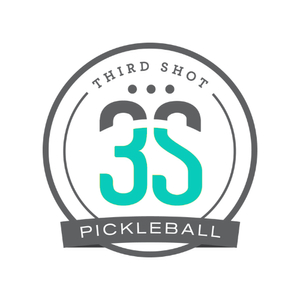If recreational pickleball is your thing, there’s a good chance you play about equal amounts from the left and right sides of the court. If you’re serving from the right and you win the rally, you simply slide over to the left and play the point from that side. The score dictates where you play. Simple.
But if you play competitive pickleball, this kind of thinking means you’re missing opportunities to be better than you are. Nearly everyone plays better on one side or the other. Or should I say, nearly everyone is stronger on one side or the other. In this article, I want to address how to figure out which side of the court you should play on.
Let’s begin by making some assumptions. First, let’s assume you are right-handed. Your partner too. Second, let’s assume that you both are like most people and your forehands are better than your backhands when it comes to hitting hard. Finally, since we’re talking about playing the best pickleball you can, let’s assume you were also playing to win. Personal feelings and ego need to stay out of this.
All things being equal, it makes sense to put your stronger player on the left side of the court most of the time. Why? First, if the opponents ever hit to the middle of the court (the safest place at least in terms of geometry), they will be hitting to your best player's forehand. Your best player gets to hit their best shot!
But let’s say they don’t want the stronger player to get the ball. Your opponents are now forced to hit out wide if they want to get it to your weaker player. But because your weaker player is also right-handed, they are now heading to their strength.
By setting up the stronger player on the left side of the court and the weaker player on the right, you are posing a challenge to your opponents: if they are going to get the ball to the weaker player, it’s going to be by hitting to their strength (forehand). Anything else will be hit to the stronger player, creating risk for them.
At the start of this article, I mentioned some assumptions: both players being right-handed; both players having a stronger forehand than backhand; playing to win. But a fourth assumption is also important: that the left-side player is prepared to poach (and the right-side player is okay with it). Remember, this strategy is based on the idea that the opponents will have a difficult time getting the ball to the weaker (right-side) player's backhand. Well, this is only true if the left-side player is willing to take up space in the middle of the court.
When you watch advanced pickleball, it is very clear that it’s not my side/your side. They are playing as a team. It is vital that the left-side player be active taking up space and move across the centerline when possible. They should be a good mover, preferably with a long wingspan.
The mindset of these two players is also quite different. The player on the left side really should be the dominant force: looking to hit offensive shots whenever possible. They are creating trouble for the opponents. The right-side player typically is in more of a defensive role. Their job is to be steady, consistent and keep the ball low enough that they are difficult to attack. Of course, they may have opportunities to cause some trouble themselves and should be prepared for the moment. But largely speaking, the left-side player is the aggressor.
Of course, you don’t need to play pickleball this way. It is tricky. It requires stacking, and it requires the teams to leave ego at the entrance gate. But if you care about winning, it makes sense to think through how you can maximize your team's advantages and minimize your deficits. Putting the strongest player on the left side — regardless of the score — of the court is often a good way to do this.
Written By: Mark Renneson




